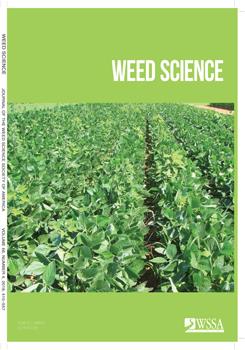Flax-leaf alyssum (Alyssum linifolium Steph. ex. Willd.) is a winter weed species in irrigated and dryland farming systems of Iran. Experiments were conducted to compare the cardinal temperatures of A. linifolium at different levels of drought, salt concentration, and pH. In all experiments, the dent-like model showed a better fit than the quadratic polynomial model. Alyssum linifolium produced the highest germination rates at pH 7 and a temperature of 20 C in nonstress treatment. Minimum, optimum, and ceiling temperatures in the dent-like model were 4.1 (upper =26.8, lower=10.0) and 35 C, and in the quadratic polynomial model were 3.3, 19.1, and 35.0 C, respectively. At increased salinity and drought potential levels, the minimum temperature increased, while optimum and ceiling temperatures decreased. Seeds could germinate at up to 20 dS m-1 and −1 MPa, respectively, but germination rate and percentage significantly decreased. The seeds of this weed germinated across a wide range of pH values (4 ≤⃒ pH ≥⃒ 8), but the temperature range at which seeds could germinate was reduced. These data serve as guidelines for species-specific propagation protocols and agricultural decision support systems.
How to translate text using browser tools
1 July 2018
Determination of Cardinal Temperatures of Flax-leaf Alyssum (Alyssum linifolium) in Response to Salinity, pH, and Drought Stress
Ahmadreza Mobli,
Ali Ghanbari,
Mehdi Rastgoo
ACCESS THE FULL ARTICLE

Weed Science
Vol. 66 • No. 4
July-August 2018
Vol. 66 • No. 4
July-August 2018
ceiling temperatures
Minimum
nonlinear regression
optimum




